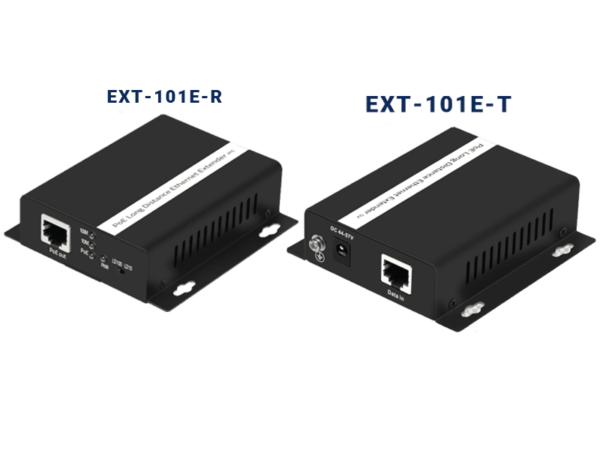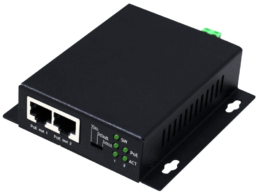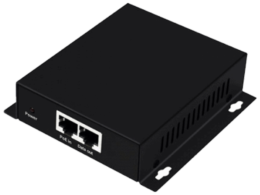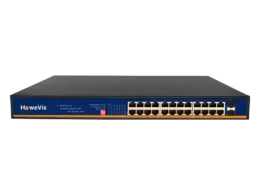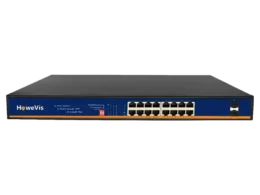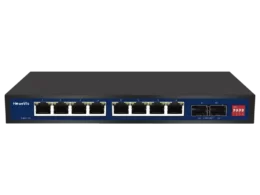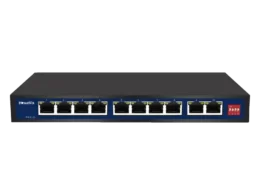Ever wonder how we can power devices and enable data transmission seamlessly over a single pair of ethernet cables with a DC supply? That’s the magic of passive Power over Ethernet (PoE). Imagine simplifying our network setup with pair ethernet cables, reducing clutter and installation time while maintaining efficient data transmission. Passive PoE, using pairs, has become an essential tool in our tech arsenal, enabling us to power up various devices without the need for numerous power sources or outlets and allowing PSE (Power Sourcing Equipment) to transmit information. By integrating this PoE device technology into our systems, we’re not just streamlining operations but setting ourselves up for a future where connectivity and information flow are ubiquitous and unobtrusive.
In today’s fast-paced world, we crave solutions that are as smart as they are straightforward. Let’s dive into how passive PoE, with precise PSE and pairs, stands out as one solution—uncomplicating our lives by delivering power with precision and reliability.
Passive PoE vs. Active PoE: Understanding the Technical Differences
Voltage Variability
Passive Power over Ethernet (PoE) and active PoE differ significantly in voltage levels and power sourcing equipment (PSE) requirements. With passive PoE, devices often receive a fixed voltage, usually 24V. This can be limiting because not all devices operate at the same power level.
When we use active PoE, things get more flexible. The system communicates with the connected device to negotiate an appropriate voltage level up to 56V. This negotiation is crucial for powering various types of gear without causing damage.
For example, connecting a security camera that requires 48V using passive PoE won’t function unless the power source matches this requirement. But with active PoE, our switch can automatically adjust to provide just what’s needed.
Protocol Communication
The communication between devices and power sources and the number of pairs used also varies between these two types of PoE. Active systems use complex protocols like IEEE 802.3af/at/bt standards, allowing for back-and-forth communication over pairs before establishing a connection.
This feature ensures compatibility and prevents potential issues from mismatched power requirements. For example, when we plug in our latest VoIP phone, it must first handshake with the network switch to ensure smooth operation.
In contrast, passive setups lack such sophisticated interaction—they’re essentially “dumb” connections that supply power regardless of what’s on the other end as long as there’s physical compatibility.
Safety Features
Safety mechanisms are another critical difference between passive and active PoE solutions—we’ve learned this firsthand after frying one too many gadgets! Thanks to their standard compliance, operational systems have built-in safeguards against overloading or incorrect installation.
They detect whether a connected device needs power and how much before sending electricity down the line—like asking, “Are you ready?” before flipping on a light switch.
With passive alternatives, though, protection is minimal or non-existent; they’ll pump out energy no matter what’s connected—think turning on every faucet without checking if there’s a bucket underneath!
Scenarios Where Passive PoE Outshines Active PoE
Fixed-Voltage Devices
Passive Power over Ethernet (PoE) shines when we use devices that require a fixed voltage. Unlike active PoE, passive PoE does not negotiate power delivery with the connected device. This means it sends power without modification or communication, making it ideal for gadgets that accept a specific voltage. For instance, if our security cameras need precisely 24 volts, passive PoE can deliver this directly.
In these scenarios, using active PoE could be overkill and unnecessarily complicated. We’ve found that some of our outdoor access points only work with passive PoE injectors because they are built to operate on one type of voltage only.
Simple Networks
Simplicity is vital when we’re setting up small-scale networks in places like homes or small offices. Here’s where passive Poe becomes our go-to solution due to its straightforward nature. It doesn’t involve complex management systems or negotiation protocols—just plug-and-play.
We have experienced quicker deployments in such environments since there’s no need for advanced setup procedures. Our network extenders and VoIP phones worked seamlessly once connected through the spare pairs of wires available in the existing network cables—a testament to how uncomplicated yet effective passive Poe can be.
Cost-Effectiveness
One significant advantage that draws us towards passive Poe is its cost-effectiveness—especially when budget constraints are tight. Deploying an extensive active Poe infrastructure involves purchasing specialized switches or midspans, which can inflate costs significantly.
However, by utilizing passive PoE, we’ve cut expenses while maintaining reliable connectivity for devices like IP cameras and wireless radios, which don’t require sophisticated power management features offered by active solutions.
With a few simple components, such as injectors and splitters, bought at a fraction of the cost compared to their active counterparts, we’ve managed efficient network setups without breaking the bank.
The Basics of Passive Power Over Ethernet
Simple Design
Passive Power over Ethernet (PoE) stands out for its simplicity. Unlike active PoE, there is no handshake between the power source and the powered device. This means a constant power supply flows without any adjustment based on the device’s needs.
When we set up passive PoE systems, we appreciate their straightforwardness. There’s no need for complex negotiation protocols or sophisticated electronics to manage the power delivery. It’s akin to connecting a lamp directly to an outlet – it just works. With passive PoE, the voltage starts flowing as soon as you join.
The design simplicity translates into cost-effectiveness and ease of implementation. This can be incredibly beneficial for small-scale projects or installations where constant power is sufficient.
Reliable Connection
In our experience with network setups utilizing pair ethernet cabling, reliability is critical. Passive PoE provides a direct line of electricity through pair cables alongside data transmission – all in one neat package.
This setup reduces points of failure since there’s less complexity in wiring and connections; however, it also means that precautions must be taken against potential issues like voltage drop, which can occur over longer distances due to cable resistance.
To mitigate such risks during our installations, we ensure that cable lengths are appropriate for minimizing resistance-related losses and avoiding scenarios like short circuits—a simple but crucial consideration when planning your network layout.
Selecting the Right PoE Solution for Your Network
Power Assessment
When we consider integrating PoE into our network, assessing the power requirements of devices is crucial. We look at each PoE device’s power needs, from wireless access points to cameras. This ensures that our selected passive PoE solution can deliver sufficient power without overloading the system.
We also examine whether our devices support pair PoE or require standard configurations. Some gadgets only need two pairs for data and power, while others might use all four pairs in a cable. Knowing this helps us choose an appropriate passive PoE injector or switch.
Evaluating Costs: Active vs. Passive PoE Switches
Initial Investment
When we consider PoE switches, the initial cost is a crucial factor. Active PoE switches are typically more expensive upfront due to their advanced features like power management and auto-detection capabilities. They support more devices but hit our wallets harder at first glance.
Conversely, passive PoE switches cost less when we initially purchase them. They lack sophisticated features but still get the job done for simpler setups. For example, setting up a small office network might not require the bells and whistles of an active switch, making passive PoE an economical choice.
Operational Costs
Over time, operational costs can add up significantly for us. With active PoE switches, electricity usage tends to be higher because they’re designed to cater to various devices with different power needs. This means that while they offer versatility, our energy bills could reflect that flexibility.
Passive PoE switches have lower energy requirements since they don’t adjust power output per device; this means potential savings on our monthly bills. However, if improperly matched with unsuitable devices, these savings could be negated by damage or inefficiency.
Maintenance Expenses
Maintenance and replacement expenses must also be factored into our decision-making when choosing between active and passive network PoE solutions.
Active PoE switches have longer lifespans due to built-in protections against overloading or underpowering connected devices. While the initial investment may be steeper, as mentioned earlier, fewer replacements mean long-term savings for us in maintenance costs.
On the other hand, passive PoEs require careful matching with compatible equipment; otherwise, we risk premature failure of either end of the connection—switch or device—which could lead to unexpected replacement expenses.
Ethernet Support and Cable Length Considerations in PoE
Cable Compatibility
Choosing the right ethernet cables is crucial when we delve into the practicalities of setting up a network. Passive Power over Ethernet (PoE) works seamlessly with various types of wires, such as Cat5, Cat5e, and Cat6. Each cable type has its own merits.
For instance, Cat5e cables are designed to reduce crosstalk – the unwanted signal transfer between communication channels. This feature makes them ideal for high-speed data transfer while supporting passive PoE applications. On the other hand, Cat6 cables perform even better due to their enhanced shielding, which helps maintain signal quality over longer distances.
We must remember that although these ethernet cables are compatible with passive PoE, they have different capabilities. It’s essential to match our network demands with the specifications of these cables.
Distance Limitations
Another critical consideration we face concerns distance limitations inherent in passive PoE setups. The maximum reach for power delivery without significant loss typically hovers around 100 meters or 328 feet – a standard IEEE sets for ethernet technology, including passive PoE systems.
However, issues start cropping beyond this length; voltage drops can become more pronounced, causing insufficient power at the device end or even complete disconnection if critical thresholds aren’t met. We’ve learned it’s paramount to plan our network layout carefully so devices fall within this effective range.
Signal degradation is also on our watch list. Extending cable lengths can invite interference and weaken data transmission integrity, leading to potential errors or slowdowns in communication rates across our network setup.
Unveiling PoE Standards and Compatibility Issues
PoE Standards
As we delve into the Power over Ethernet (PoE) world, understanding the standards that govern it is crucial. The IEEE 802.3af/at/bt are more than just numbers; they’re the rulebooks for device compatibility and power delivery efficiency.
The 802.3af standard, often called PoE, is the oldest in this family. It supplies up to 15.4 watts per port, which may power essential devices like IP cameras or VoIP phones. Then there’s 802.3at, known as PoE+. This ups the ante to 30 watts per port, accommodating more demanding devices.
Our latest trailblazer is 802.3bt, also dubbed as PoE++ or Type 4, delivering a robust up to 100 watts through four twisted pairs of Ethernet cable—a real game-changer for us when integrating high-powered equipment without cluttering spaces with extra cords.
Interoperability Challenges
Cross-vendor interoperability can turn our network adventure sour if not appropriately managed. Different manufacturers have distinct interpretations of standards, sometimes leading to unanticipated issues when connecting devices from various brands.
We’ve seen cases where a switch claiming compliance doesn’t play nice with specific powered devices (PD). Sometimes firmware updates help, but other times, we’re left waiting for solutions that may never come—frustrating indeed!
When considering new gear, it’s wise to check if products are certified by entities like Wi-Fi Alliance or similar organizations, ensuring cross-compatibility between different types of hardware using these POE standards.
Legacy Integration
Integrating legacy equipment with modern standards presents its own set of challenges but also opportunities for creativity within our network design strategies.
Older tech might only support lower-power options such as 802. af while newer models may require at or Bt levels of juice; hence, some PDs won’t light up unless they detect enough wattage coming their way—which older switches can’t provide.
However, adapters exist to bridge this gap, allowing us to repurpose existing infrastructure rather than replace everything wholesale—an economical and environmentally considerate approach we always appreciate.
Power Over Ethernet Injectors and Their Role
PoE Applications
We often find ourselves in situations where our network devices lack PoE capability. This is where Power Over Ethernet injectors, or passive PoE, come into play. They’re the unsung heroes that power up remote devices without needing a nearby electrical outlet.
For instance, when we set up security cameras in hard-to-reach places, an injector can provide power and data through a single cable. It’s convenient and cuts down on installation costs. Similarly, injectors are essential for deploying access points in large areas like warehouses or campuses to avoid extensive wiring.
Injector Varieties
The choice between single-port and multi-port injectors depends mainly on our needs. A single-port injector powers one device—perfect for a standalone setup like an isolated IP camera.
On the other hand, multi-port options let us connect multiple devices at once. Imagine setting up several workstations with VoIP phones; multi-port injectors streamline this process by centralizing the power source.
Integration Tips
Integrating passive PoE into existing networks requires careful consideration of compatibility and infrastructure impact. We must ensure that voltage output matches our device requirements to prevent damage.
Moreover, it’s crucial to understand how data pins within cables align with those of connected devices for seamless information transfer. Here’s what we keep in mind:
- Check compatibility with the current network class.
- Verify pin alignment for proper data transmission.
Incorporating Energy Efficiency in PoE Systems
Green Tech
In our quest for efficiency, we’ve discovered the wonders of Green Ethernet technology in PoE systems. This innovation is a game-changer. It ensures that power is not wasted when devices are idle. Imagine a scenario where IP cameras and other PoE devices scale back energy consumption during off-peak hours.
We’ve seen firsthand how this tech can slash costs. By only providing power when necessary, we avoid needless expenses on electricity. The savings accumulate over time, making a significant difference to our budget.
Smart Allocation
Equally impressive is the intelligent allocation of energy that these systems provide. They assess what each connected device needs and adjust accordingly. We love how this feels like having an intelligent conversation with our network setup—it listens and responds without us saying a word.
For instance, if a device requires less power, the system automatically scales down its DC supply through feedback mechanisms within PSE (Power Sourcing Equipment). This precise distribution avoids any waste of resources.
Summary
We’ve journeyed through the ins and outs of Passive PoE, weighing it against Active PoE and unpacking the nuts and bolts of what makes a PoE solution tick. From technical differences to cost evaluations, we’ve seen where Passive PoE shines and explores the pivotal roles of standards, injectors, and efficiency in our network adventures. The right choice in PoE can power up our tech landscape—be it for simplicity or cost-effectiveness—without compromising performance.
Now’s the time to harness this knowledge. Let’s gear up and select the PoE that best fits our quest for connectivity. Whether we’re rigging up a small home setup or rolling out an enterprise network, remember: the power is in our hands. Ready to electrify your network? Reach out to us, and let’s light up this journey together!
Frequently Asked Questions
What is the difference between passive and active PoE in powering devices like wireless access points over an ethernet cable, considering factors like voltage drop and pair ethernet?
Passive PoE sends power over Ethernet lines without negotiating the power requirements with the connected device, whereas active PoE communicates with devices to supply the necessary power.
When should I use passive PoE?
Use passive PoE when you have simple devices with fixed power needs that don’t require communication for voltage negotiation, such as specific cameras or sensors.
How do I know if my ethernet cable network needs a passive or active PoE solution for devices like wireless access points?
Consider your network’s specific devices and their power requirements. Passive might be sufficient for simpler setups, while more complex networks often need the flexibility of active PoE.
Are passive PoE switches cheaper than active ones?
Generally, yes. Passive PoE switches are less expensive because they lack the sophisticated circuitry to negotiate power demands with connected devices.
Can I use any Ethernet cable for my passive PoE setup to ensure proper data transmission and DC supply using spare pairs for cabling?
It’s best to use Cat5e or higher-ratables, which are higher-ratables designed to handle Power Over Ethernet applications up to certain distances without degradation.
Do all devices support passive Power Over Ethernet (PoE)?
No, not all devices support it. Always check your device specifications for compatibility before using a passive PoE injector or switch.
